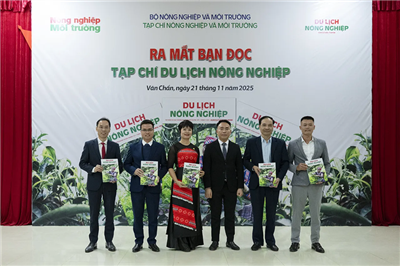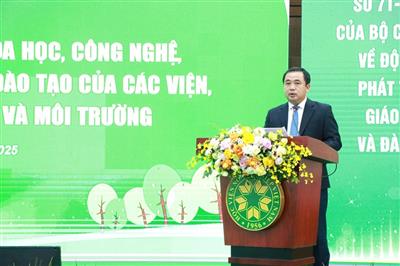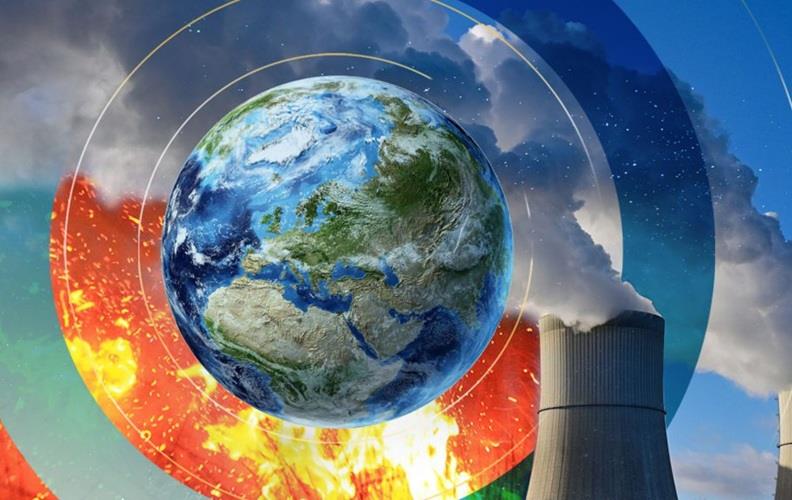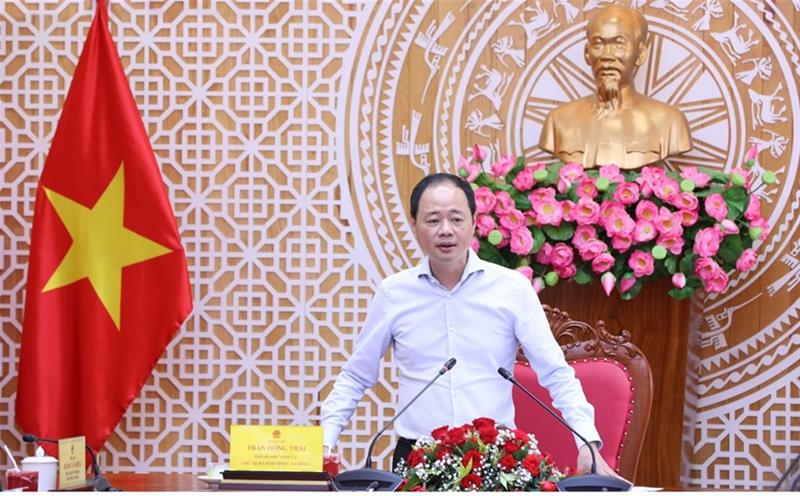
CO₂ absorption capacity of melaleuca forest in Tra Su landscape protection area
07/09/2025TN&MTIn the context of climate change and greenhouse gas emissions becoming global challenges, quantifying the carbon sequestration capacity of forest ecosystems holds both scientific and practical significance. Particularly in the Mekong Delta, where wetland forest ecosystems are ecologically valuable yet vulnerable to environmental change, studies on forest carbon stocks are increasingly essential.
The research paper “CO₂ Absorption Capacity of Melaleuca (Melaleuca cajuputi) in Tra Su Landscape Protection Area, An Giang Province” by Nguyen Thi Ngoc Tam, Huynh Thuy Vi, Huynh Thi Ngoc Ngan, Tran Thi Kim Hong, and Nguyen Vo Chau Ngan (Can Tho University) was published in the Proceedings of the 2nd National Scientific Conference on Agricultural, Rural Environment and Sustainable Development (2025). The study provides quantitative data on biomass, carbon stock, and CO₂ absorption capacity of Melaleuca forests at different age levels in Tra Su.
The Agriculture & Environment Magazine is pleased to introduce this research to readers, offering a scientific perspective on the role of the Tra Su Melaleuca forest in greenhouse gas mitigation and sustainable forest management in Vietnam.

Researchers conducted field surveys in the 845-hectare Tra Su Melaleuca forest to measure tree density, diameter (D1.3), and height (Hvn) across three age classes, assessing the forest’s CO₂ absorption capacity
Tra Su Melaleuca forest: The “green lung” of An Giang province
Located in An Giang province, the Tra Su forest spans over 845 hectares and represents a typical wetland ecosystem of the western Hau River region. The forest not only holds ecological and landscape value but also plays a crucial role in local environmental regulation and ecological protection. With Melaleuca cajuputi as the dominant species, Tra Su is often described as the “green lung” of An Giang, contributing to maintaining regional ecological balance.
To quantify the greenhouse gas absorption function of this ecosystem, the research team conducted field surveys during the dry season of 2024 across nine representative standard plots. The study focused on Melaleuca trees divided into three age levels: (I) 16–20 years, (II) 21–35 years, and (III) over 35 years. In each plot, basic parameters including tree density, diameter at breast height (D1.3), and total height (Hvn) were measured.
Based on field data, the authors calculated above-ground and below-ground biomass, determined carbon stocks, and converted them into equivalent CO₂ absorption values following the 2006 IPCC Guidelines.
CO₂ sequestration potential of Tra Su Melaleuca forest
Measurements revealed that the growth of Melaleuca trees in Tra Su varied markedly by age class. Trees in age level III (>35 years) had the largest diameter and height, while those in level I (16–20 years) exhibited the highest density. Consequently, total biomass per hectare did not increase linearly with age due to the inverse relationship between individual size and stand density.
Biomass analysis showed that older trees accumulated higher individual biomass, concentrated mainly in the stem. The average fresh biomass per tree was 133.18 kg at level I and 241.67 kg at level III; corresponding dry biomass values were 79.49 kg and 146.76 kg per tree. The ratio of dry to fresh biomass remained consistent, aligning with previous findings by Tran Thi Kim Hong et al. (2015).
When calculated on a per-hectare basis, all three age levels exhibited high and stable carbon accumulation potential, each with distinct advantages. The equivalent CO₂ absorption capacity was estimated as follows:
Level I: 1,552.9 tons CO₂/ha
Level II: 1,203.8 tons CO₂/ha
Level III: 1,494.3 tons CO₂/ha
Compared with previous research by Tran Thi Kim Hong et al. (2019) in Tra Su, the present study shows a similar trend but higher values. The 2019 study reported carbon stocks of 319.03 tons/ha (16–20 years), 244.41 tons/ha (26–30 years), and 302.06 tons/ha (>30 years), lower than those observed here. The differences mainly result from variations in density and growth parameters, as higher density and larger D1.3 and Hvn values lead to greater biomass, and thus higher carbon storage and CO₂ absorption.
Scientific and practical significance
Findings from the Tra Su Melaleuca forest confirm that all three age classes maintain high and stable carbon accumulation and CO₂ absorption capacities. This provides important scientific evidence reinforcing the role of Melaleuca ecosystems in climate regulation, particularly significant for the Mekong Delta, a region highly affected by climate change.
Quantitative data on biomass, carbon stock, and CO₂ sequestration serve as a scientific foundation for forest management and conservation. They are essential for calculating Payment for Forest Environmental Services (PFES), in which carbon sequestration and storage play a key role. Moreover, these results support local authorities and management agencies in developing sustainable forest management plans aligned with Vietnam’s international commitments to greenhouse gas reduction.
Conclusion and outlook
The study “CO₂ absorption capacity of Melaleuca in Tra Su landscape protection area, An Giang province” provides valuable quantitative data on biomass, carbon stock, and CO₂ absorption across three age levels of Melaleuca forest. Results indicate that Tra Su forest can absorb between 1,203.8 and 1,552.9 tons CO₂ per hectare, underscoring its role as a vital “green lung” of the region.
The research not only contributes scientific data to understanding the carbon sequestration potential of Melaleuca forests but also offers practical value for forest resource management, PFES calculation, and climate change policy development. Future studies should expand to other Melaleuca forests across the Mekong Delta to establish a more comprehensive carbon stock and CO₂ absorption database for wetland forests.
Beyond its scientific importance, Tra Su Melaleuca forest is also a renowned ecotourism destination in An Giang. Hence, sustainable conservation and utilization of its ecological value can harmonize forest protection with community livelihood development, creating a balanced model of environmental stewardship and economic benefit.
Ngoc Huyen
Source: Proceedings of the 2nd National Scientific Conference on “Agricultural and Rural Environment and Sustainable Development''
















